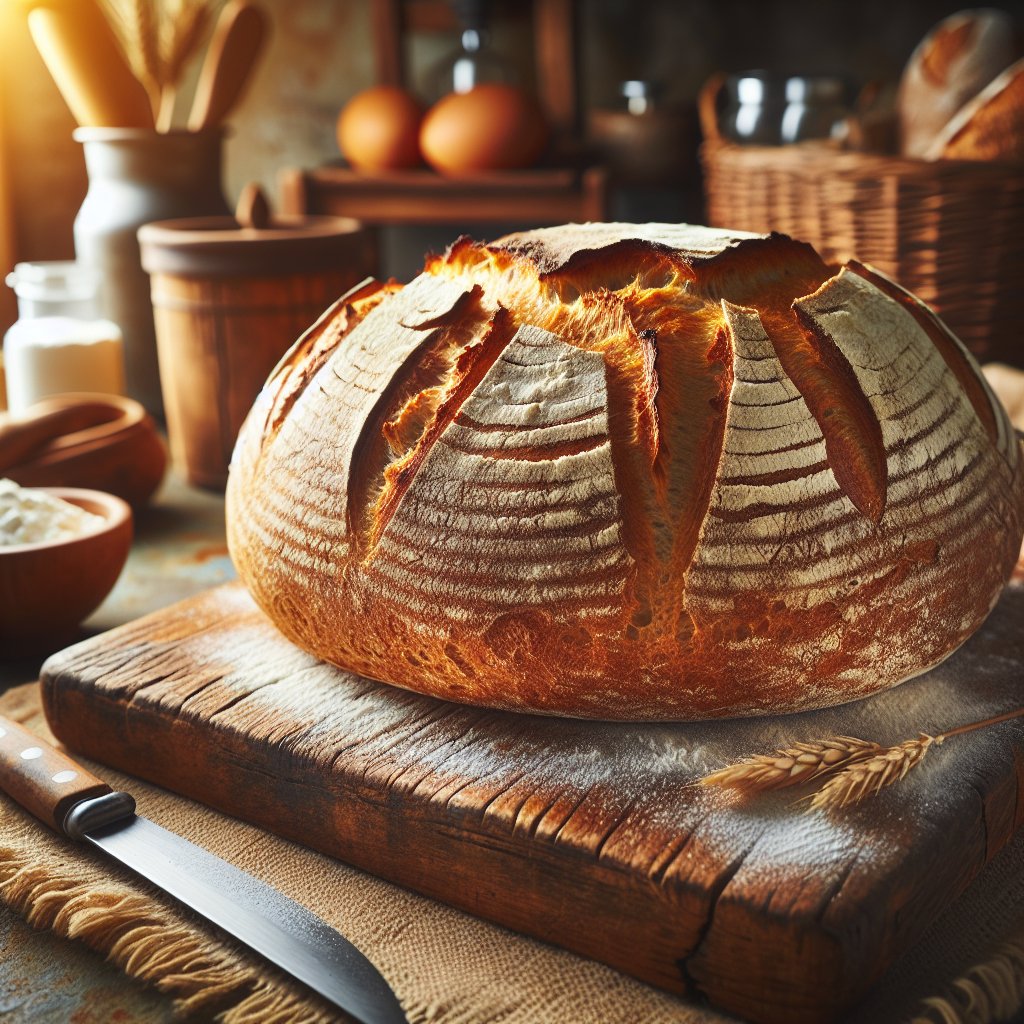Unlock the Secret: Gluten-Free Bread Recipes for a Keto-Friendly Diet
Why Gluten-Free and Keto-Friendly Diets Are So Popular
Have you noticed the growing popularity of gluten-free and keto-friendly diets lately? It seems like everywhere you turn, there are gluten-free options and keto-friendly recipes popping up. But what’s driving the popularity of these dietary choices?
Let’s start by unraveling the mystery behind the rise of gluten-free and keto-friendly diets. First, let’s talk about gluten-free. Gluten is a protein found in grains like wheat, barley, and rye. While it’s harmless for most people, individuals with celiac disease or gluten sensitivity must avoid it to prevent adverse health effects. Additionally, many people are opting for gluten-free diets as a personal choice to support digestive health and overall well-being.
As for the keto-friendly craze, it’s all about tapping into the power of ketosis. The ketogenic diet emphasizes consuming high-fat, moderate-protein, and low-carbohydrate foods to shift the body into a state of ketosis. This metabolic state encourages the body to burn fat for fuel instead of relying on glucose from carbs. Many individuals are drawn to the keto diet for its potential weight loss benefits and improved energy levels.
Recent scientific research has also shed light on the potential health advantages of both gluten-free and keto-friendly approaches. A study published in the Journal of Neurology, Neurosurgery & Psychiatry suggested that a gluten-free diet may have potential benefits for individuals with neurological conditions. Meanwhile, research published in the journal Obesity Reviews highlighted the effectiveness of the ketogenic diet for weight loss and metabolic health.
The intersection of these two dietary trends has given rise to an exciting fusion – gluten-free bread recipes tailored for a keto-friendly lifestyle. In this article, we’ll delve into the world of gluten-free bread and uncover delicious recipes that perfectly align with a keto-friendly diet, allowing you to enjoy the best of both worlds.

Benefits of Gluten-Free Bread on Keto Diet
When it comes to following a ketogenic diet, finding suitable bread options can be quite a challenge. Many traditional breads are high in carbohydrates, which can easily kick you out of ketosis. However, the good news is that gluten-free bread can be a game-changer for those following a keto lifestyle. Let’s explore how gluten-free bread fits into a keto lifestyle and the benefits it offers.
Low Carb Content
One of the main benefits of gluten-free bread for those on a keto diet is its low carb content. Research has shown that traditional wheat bread contains a high amount of carbohydrates, which can spike blood sugar levels and hinder ketosis. Gluten-free bread, on the other hand, is often made with low-carb flours such as almond flour, coconut flour, or flaxseed meal. As a result, it provides a much lower net carb count, making it a keto-friendly option.
High in Healthy Fats and Fiber
Gluten-free bread that is keto-friendly is often packed with healthy fats and fiber. This is important for those following a ketogenic diet, as it helps keep them satiated and supports digestive health. Almond flour, a common ingredient in gluten-free keto bread, is rich in monounsaturated fats and fiber, which can contribute to improved heart health and better blood sugar control.
Avoiding Inflammatory Responses
For individuals with gluten sensitivities or celiac disease, gluten-free bread is a necessity. Research has indicated that consuming gluten-containing foods can trigger inflammatory responses in the body, leading to a range of symptoms from digestive discomfort to skin issues. By opting for gluten-free bread, individuals on a keto diet can avoid these potential inflammatory reactions, supporting overall well-being and comfort.
In conclusion, gluten-free bread can be a fabulous addition to a keto lifestyle. It offers a low-carb alternative that is high in healthy fats, fiber, and helps individuals steer clear of inflammatory responses that gluten-containing foods might trigger. When choosing gluten-free bread, it’s always best to check the ingredients to ensure that it aligns with your keto goals.
Nutritional Value of Gluten-Free Bread
When it comes to following a keto-friendly diet, understanding the nutritional value of gluten-free bread is essential. While traditional bread is a no-go on the keto diet due to its high carb content, gluten-free bread offers a low-carb alternative for those craving a sandwich or toast.
Gluten-free bread is typically made using alternative flours such as almond flour, coconut flour, or flaxseed meal, making it a suitable choice for individuals following a ketogenic lifestyle. Let’s delve into the nutrients and macros found in gluten-free bread:
Macronutrients
A 1-ounce slice of gluten-free bread contains approximately:
- Calories: 70-90 calories
- Carbohydrates: 10-12g (including fiber)
- Protein: 2-4g
- Fat: 3-5g
These macronutrient values can vary slightly depending on the specific ingredients used in the gluten-free bread recipe. However, most gluten-free bread options are lower in total carbs compared to traditional wheat-based bread.
Micronutrients
In addition to macronutrients, gluten-free bread can also provide essential micronutrients such as:
- Vitamins: B vitamins (B1, B2, B3, B6) and vitamin E
- Minerals: Calcium, iron, magnesium, and phosphorus
- Healthy Fats: Omega-3 fatty acids, especially if flaxseed meal is used
These micronutrients play a crucial role in supporting overall health and wellbeing, making gluten-free bread a favorable choice for individuals seeking a nutritious keto-friendly option.
When incorporating gluten-free bread into your keto meal plan, it’s important to be mindful of portion sizes to stay within your daily carb limit. Pairing it with high-quality protein and healthy fats can create a balanced and satisfying keto-friendly meal or snack.

Choosing the Right Gluten-Free Bread for Keto
When it comes to following a keto diet, finding suitable gluten-free bread can be a game-changer. Whether you’re making a delicious sandwich or craving some toast with your morning eggs, having the right gluten-free bread is essential. Let’s take a closer look at some popular types of gluten-free bread and how they stack up for those following a keto lifestyle.
Coconut Flour Bread
Coconut flour bread is a standout option for those following a keto diet due to its low carb content. A study published in the Journal of Nutrition and Metabolism found that coconut flour is rich in healthy fats and fiber, making it a great choice for maintaining ketosis while enjoying a tasty bread alternative. It has a subtly sweet flavor, making it versatile for both sweet and savory toppings.
Almond Flour Bread
Almond flour bread is another popular choice among keto enthusiasts. Research from the European Journal of Clinical Nutrition suggests that almond flour is not only low in carbohydrates but is also packed with essential nutrients like protein, healthy fats, and vitamin E. With a slightly nutty flavor and dense texture, almond flour bread provides a satisfying option for your keto-friendly meals.
Flaxseed Bread
Flaxseed bread is a powerhouse of nutrition for those on a keto diet. A study in the Journal of Food Science and Technology highlights the beneficial effects of flaxseeds in reducing blood sugar levels and promoting satiety, which aligns perfectly with the goals of a ketogenic lifestyle. Flaxseed bread has a rich, earthy flavor and a moist texture, making it a delightful choice for toasting or making a sandwich.
When choosing the right gluten-free bread for your keto diet, consider factors such as carb content, nutrient density, and flavor profile. Experiment with different types of bread made from coconut flour, almond flour, and flaxseeds to find the perfect match for your taste buds and nutritional needs.
Remember, while these bread options are low in net carbs and suitable for a keto diet, portion control is key to staying within your daily carb limit. So, go ahead, get creative, and enjoy your sandwiches and toast guilt-free with these delicious gluten-free bread options!
Providing Easy-to-Follow Recipes for Making Gluten-Free Bread at Home
One of the biggest challenges for those following a keto-friendly diet is finding suitable alternatives to beloved carb-heavy foods. Luckily, creating delicious gluten-free bread at home is easier than you might think, and it’s a game-changer for anyone craving a slice of bread on a keto diet.
Many store-bought gluten-free bread options are far from keto-friendly due to their high-carb content. By making your own gluten-free bread at home, you can ensure that it’s both low in carbs and free from gluten, meeting the requirements of a keto-friendly diet.
Let’s dive into the exciting world of homemade gluten-free bread recipes tailored for a keto-friendly lifestyle!

Tips for Incorporating Gluten-Free Bread into Keto Diet
If you follow a ketogenic diet and also have a sensitivity to gluten, finding a delicious bread that fits your dietary restrictions can be a challenge. However, with the growing popularity of gluten-free bread options, it’s easier than ever to incorporate it into your keto meal plan. Here are some tips for making gluten-free bread a delightful part of your keto lifestyle.
Choose the Right Ingredients
When selecting gluten-free bread for your keto diet, it’s important to pay attention to the ingredients. Look for options that are made with almond flour, coconut flour, psyllium husk, or flaxseed meal. These ingredients are not only gluten-free but also low in carbs, making them suitable for a keto-friendly meal plan.
Portion Control
While gluten-free bread can be a part of a keto diet, it’s essential to practice portion control. Keep in mind that even though it’s gluten-free, the bread still contains calories and carbs that can impact your ketosis. Enjoy it in moderation to ensure that you stay within your daily carb limit.
Pair it with Healthy Fats and Proteins
To make your gluten-free bread a more balanced keto meal, consider pairing it with healthy fats and proteins. For example, you can top your gluten-free bread with avocado, smoked salmon, or a spread of almond butter. This not only adds flavor and nutrition to your meal but also helps balance the macronutrients for a well-rounded keto-friendly option.
Experiment with Recipes
If you enjoy baking, consider experimenting with gluten-free bread recipes that are keto-friendly. There are countless recipes available that use alternative flours and sweeteners to create delicious bread that aligns with your dietary goals. From almond flour bread to coconut flour loaves, the options are endless, allowing you to customize your bread to suit your tastes and preferences.
By following these tips, you can easily incorporate gluten-free bread into your ketogenic meal plan, allowing you to enjoy the benefits of both a low-carb lifestyle and a gluten-free diet.
Potential Drawbacks of Gluten-Free Bread on Keto
While gluten-free bread can be a great alternative for those on a keto diet, there are some considerations and limitations to keep in mind.
Carb Content
Many commercially available gluten-free bread options are made from high-carb ingredients such as rice flour, tapioca starch, or potato starch. These ingredients can significantly increase the carb content, making it challenging to stay within the recommended daily carb allowance for a ketogenic diet.
Impact on Blood Sugar Levels
Some gluten-free bread varieties have a high glycemic index, which means they can cause a rapid spike in blood sugar levels. This can potentially kick you out of ketosis and hinder your efforts to stay in fat-burning mode.
Potential for Nutrient Deficiencies
Gluten-free bread may lack the essential nutrients and fiber found in traditional whole-grain, low-carb bread. This could potentially lead to nutrient deficiencies if gluten-free bread becomes a staple in your keto diet.
Processed Additives
Certain gluten-free bread brands may contain a higher amount of processed additives, preservatives, and artificial flavors to improve texture and shelf life. While these additives are meant to enhance the bread’s quality, they may not align with the clean, whole-food approach of a ketogenic lifestyle.
When choosing gluten-free bread for a keto diet, it’s important to carefully examine the ingredient list and nutrition label. Look for options that are low in net carbs, free from artificial additives, and made with nutrient-dense ingredients like almond flour, coconut flour, or flaxseed meal.
Additionally, consider making your own gluten-free keto bread at home using recipes that emphasize low-carb, high-fiber ingredients to ensure that it aligns with your dietary goals.

Summarizing the benefits and considerations of consuming gluten-free bread on a keto diet
Are you passionate about the ketogenic lifestyle but finding it hard to resist the temptation of fresh bread? You’re not alone. Luckily, there is a solution – gluten-free bread recipes that are keto-friendly!
The Benefits
Gluten-free bread is an excellent option for those following a keto diet, as it helps to maintain low carbohydrate intake while catering to individuals with gluten intolerances or sensitivities. In addition, research has shown that replacing traditional bread with gluten-free alternatives can lead to improved digestive health, increased energy levels, and better overall well-being.
For those struggling with weight management on a keto diet, opting for gluten-free bread can provide a feeling of satiety while offering essential nutrients and fiber that are often lacking in traditional low-carb diets. This can contribute to better blood sugar control, reduced cravings, and enhanced weight loss progress.
Considerations
While the benefits of gluten-free bread on a keto diet are numerous, it’s important to note the potential drawbacks. Some commercially available gluten-free bread may contain higher levels of preservatives and additives to mimic the texture and taste of traditional bread. Therefore, when choosing or making gluten-free bread, it’s essential to prioritize recipes or products with wholesome, nutrient-dense ingredients and minimal processing.
Moreover, it’s crucial to watch out for the net carb content in gluten-free bread, as some varieties can still contribute a significant amount of carbohydrates. Always check the nutrition labels and consider portion sizes to ensure you stay within your daily carb limits while enjoying your gluten-free bread on a keto diet.
Conclusion: Encouraging a Balanced Approach
While gluten-free bread can be a game-changer for those following a keto lifestyle, it’s essential to adopt a balanced approach. Embracing a variety of nutrient-dense, whole foods is key to unlocking the full benefits of a keto diet.
So, go ahead and enjoy the occasional slice of delicious homemade gluten-free bread while prioritizing fresh vegetables, healthy fats, and high-quality proteins as the foundation of your keto-friendly meals. Achieving balance in your approach will not only support your nutritional needs but also make your keto journey more sustainable and enjoyable in the long run.


